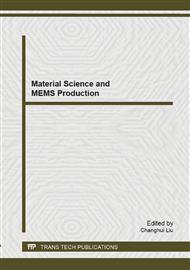p.3
p.11
p.15
p.21
p.25
p.29
p.35
p.41
Surface Effects on the Buckling of Nanowires Based on Modified Core-Shell Model
Abstract:
In this work, surface effects including surface elasticity and residual surface stress on the buckling of nanowires are theoretically investigated. Based on modified core-shell (MC-S) model, the effective elasticity incorporating surface elasticity effect of the nanowire is derived, and by using the generalized Young-Laplace equation the residual surface stress is accounted for. The ratio of critical load with and without surface effects are obtained for a nanowire loaded in uniaxial compression. Taking silver (Ag) nanowires as an example, the analyzed results demonstrate that the influence of surface effects on the critical load of buckling becomes more and more significant as the nanowire diameter decreases. Moreover, it is shown that the influence of residual surface stress on the critical load is more prominent than that of surface elasticity.
Info:
Periodical:
Pages:
3-9
Citation:
Online since:
February 2014
Authors:
Keywords:
Price:
Сopyright:
© 2014 Trans Tech Publications Ltd. All Rights Reserved
Share:
Citation:


